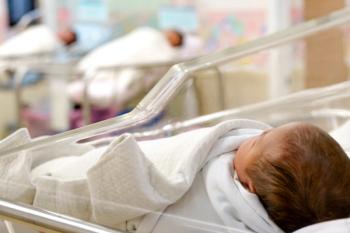
Pediatric emergency care: Black children are more likely to die
Disparities persist in mortality by race, researchers found. Improved readiness for pediatric care in hospitals appears to reduce disparities, but a gap still remains.
When it comes to pediatric care in the emergency department of hospitals, researchers have found that black children are more likely to die in medical emergencies than those of other races.
In a
“The racial disparity in mortality narrowed with increased ED pediatric readiness but was not eliminated, even at the highest pediatric readiness level,” the authors wrote.
However, researchers also found that there were no racial or ethnic disparities in deaths among pediatric patients who suffered traumatic injuries. And the researchers suggest that has significance as well.
“Trauma care is highly protocolized, and these findings support the notion that such structured systems of care promote racial and ethnic equity in pediatric outcomes,” the authors wrote.
Researchers examined records of 633,536 children who were treated in 586 emergency departments across 11 states. They reviewed data from 2012 through 2017.
Among pediatric patients with medical emergencies, the authors state that the mortality of Black patients was “significantly greater” than Hispanic patients, white patients, and other patients. The researchers noted they included all Asian, Pacific Islander, Hawaiian, American Indian, and Alaska Native in the “other” category, which they addressed as a limitation of the study.
The researchers examined mortality rates of children’s hospitals in the emergency department based on their marks on the Pediatric Readiness Score, which was developed by experts in pediatric and emergency care.
In hospitals with higher readiness scores, the mortality rate dropped among children of all races and ethnicities for those with medical emergencies and traumatic injuries, researchers found.
However, among patients with medical emergencies, Black patients had higher mortality rates, regardless of hospital readiness levels. The gap decreased among hospitals with higher readiness assessments, but it never disappeared.
“Increased pediatric readiness did not eliminate disparities, indicating that organizations and initiatives dedicated to increasing ED pediatric readiness should consider formal integration of health equity into efforts to improve pediatric emergency care,” the researchers wrote.
Even with the more encouraging finding about the lack of differences in mortality by race among pediatric patients with traumatic injuries, the researchers added some context. They speculated that it’s possible the lack of disparities among trauma patients reflects the fact that those patients in the injury group were generally healthier. They also noted the injury cohort was smaller than the group with medical emergencies.
Moreover, the authors note that the disparities seen among those with medical emergencies may reflect generations of bias and racism.
“Because the burden of comorbidities among children in the medical cohort was substantially greater than in the injury cohort, those preexisting comorbidities, which are often the result of experienced racism and structural inequities, may have predisposed Black children to greater mortality than White children in the medical cohort,” the researchers said.
The study found that Hispanic patients had lower mortality rates than patients in other groups, among patients with medical emergencies and those with traumatic injuries.
Researchers discovered that the pediatric hospitals with the lowest amount of racial and ethnic staff diversity had the highest levels of mortality.
“This finding clearly warrants further investigation,” the authors noted.
The latest research comes after a widespread analysis of pediatric emergency care by the National Pediatric Readiness Project, a partnership of the Emergency Nurses Association, the American Academy of Pediatrics and the American College of Emergency Physicians.
In the earlier study, researchers determined that
In a recent
“Children's hospitals, pediatric hospitals are very well versed in taking care of those patients just fine,” he adds. “But when they come into a community hospital, you have to be on your game. And having the equipment and the training and the knowledge and the attitude with your staff to be able to take care of them means a whole lot.”








































